- Published 10 Feb 2023
- Last Modified 24 Apr 2024
- 8 min
A Guide to Soundproofing Materials
What types of soundproofing materials are available? Discover how they can be used to soundproof walls and spaces.

There is a wide variety of materials that may be used for soundproofing purposes. The appropriate choice will depend on the intended minimisation or elimination of sound. Soundproofing materials are commonly installed either to improve the sound quality within a room or to reduce the level of sound leakage to adjacent rooms and areas. Soundproofing options include foam sheeting and acoustic insulation.
What Is Soundproofing and How Does It Work?
Soundproofing involves reducing or eliminating sound transmission between different areas by using materials that absorb, block, or dampen sound waves, preventing them from travelling through walls, floors, or ceilings.
It's also known as decibel reduction, sound insulation, or acoustic insulation. Soundproofing materials are chosen based on specific applications, aiming to decrease decibels (dB) or absorb sound effectively.
Soundproofing addresses unwanted indirect sound waves like echoes, resonances, and reverberations, making it useful for both residential and commercial settings. Residential applications often focus on minimising outside noise through methods like double-paned windows or fitted curtains. In commercial spaces, soundproofing enhances productivity and privacy among workers in areas like open-plan offices or meeting rooms.
Soundproofing materials enable the minimisation of sound in the following ways:
- Blocking airborne noise through the addition of mass to a structure and resulting in the reflection or conversion of sound energy into heat
- Separating or dampening the impact noise between structures and minimising the circulation of sound vibration/energy
- Absorbing sound that would otherwise reverberate and echo within a contained space
Soundproofing Materials – What Are They?
There are a wide variety of soundproofing materials, each suited to different applications. The best choice will depend on the desirable noise minimisation, a level which is normally indicated in the form of a dB rating. It’s also worth keeping in mind that soundproofing materials will only be as strong as their weakest point.
The dB rating typically equates to the level of sound reduction achieved on the transmission of sound through existing materials and added soundproofing. Soundproofing materials can be fitted for the effective minimisation of noise in a wide variety of environments.
Consider the varieties of soundproofing highlighted in this content:
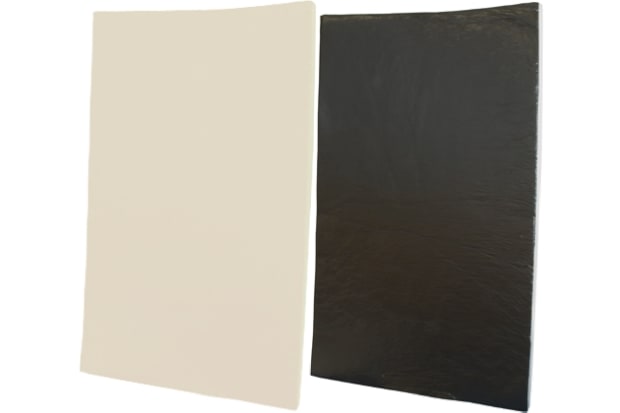
Foam soundproofing sheet
Material:
- Polyurethane foam
Benefits:
- High levels of sound absorption and insulation
- Facing protection against dust and moisture
- Chemical resistance
Typical Uses:
- Panelling of machinery
- Engine rooms
- Close-fit canopies
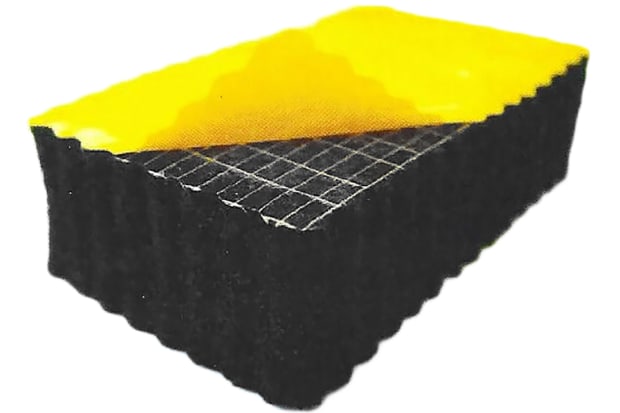
PVC soundproofing sheet
Material:
- Solid PVC sheeting
Benefits:
- High mass noise barrier
- Effective sound absorption and insulation
Typical Uses:
- Various domestic and commercial applications
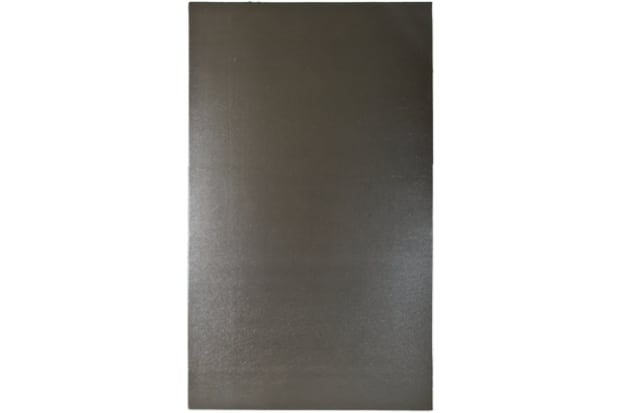
PUR soundproofing sheet
Material:
- Polyurethane foam
Benefits:
- High levels of sound absorption and insulation
- Facing protection against dust and moisture
- Resistance to chemicals
Typical Uses:
- Pump enclosures
- Engine rooms
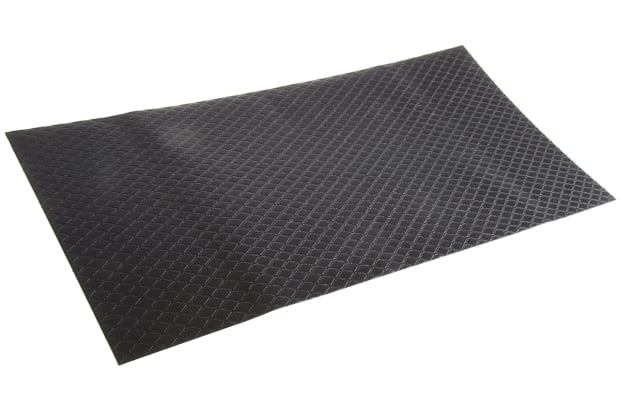
Adhesive bitumen soundproofing mat
Material:
- Black, flexible bitumen or plastic as made to industrial standards
Benefits:
- Dampens and reduces body vibrations and air noises in metals and plastics
Typical Uses:
- Various domestic and vehicle applications
Soundproofing Foam
Soft and lightweight soundproofing foam is designed for the absorption of natural sound waves and the prevention of noises generated as a result of contact on hard surfaces (such as walls and ceilings). This involves the conversion of sound energy into heat and the minimisation of the sound waves that may circulate through a room. Such foam may also be fitted for the purpose of improved sound quality, particularly within music studios. The thickness and density of the foam will have a direct bearing on the penetration of sound.
Soundproofing Foam Panels and Tiles
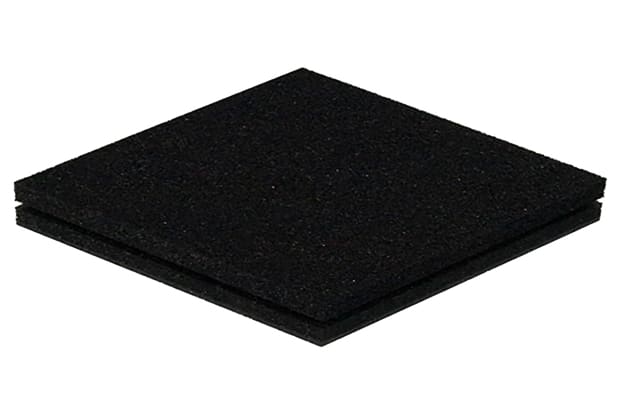
It is essential to soften hard surfaces for the effective absorption of sound within a room. This softening effect can be achieved through the installation of foam panels and the application of purpose-made tiles to the largest surface areas (floors and ceilings). Foam panels are typically fitted for the separation of the wall between rooms for the prevention of sound circulation. Soundproofing foam tiles can also be cut to your specifications.
Soundproofing Panels
Soundproofing panels are ideally suited to the deadening and dampening of sound in restaurants, offices, and other types of commercial space. Such panels are made from high-density acoustic plasterboard, effectively preventing the transfer of sound between rooms. Available options include fabric-wrapped, perforated wood, and water-resistant panels, depending on your requirements. Panels like these are designed for a range of purposes, including the absorption of sound waves, clarification of speech, and limitation of reverberation through interior spaces. They are equally suitable for domestic and commercial applications.
Soundproofing Sheets
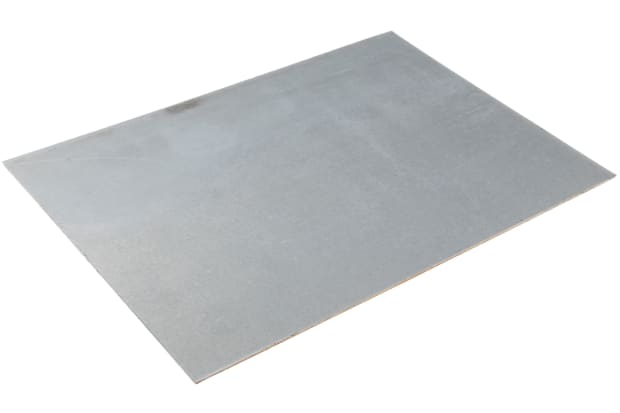
You can buy soundproofing sheets complete with a variety of fill materials and facings. Each of the materials has excellent sound absorption and insulation qualities, also ensuring protection against the ingress of dust and moisture. Some of these sheets also feature adhesive backing for secure attachment to machinery and equipment.
How to Soundproof Walls & Rooms
To soundproof walls effectively, identify the type of wall you have: solid party walls or internal stud walls. Properties with stud walls often require higher levels of soundproofing. For stud walls, start by filling any gaps or weak points with acoustic sealant. Then, improve the wall mass and add acoustic insulation between the timber battens. Using a combination of materials can help limit noise at different frequencies. This method is commonly used to soundproof bedrooms and mitigate noise from noisy neighbours.
Soundproofing a Wall
Achieving high-level soundproofing involves creating a separate room within a room to prevent vibration transfer and airborne noise. This method, known as acoustic decoupling, ensures effective sound isolation but requires careful ventilation planning and avoiding gas heaters for safety. Other options include installing thin sound panels or complete acoustic wall systems, which minimise sound without sacrificing interior space. Combining materials like high-density acoustic insulation slabs and varying stud wall thickness can further enhance soundproofing effectiveness.
Soundproofing a Room
To soundproof a room effectively, start by identifying noise sources to choose the appropriate solution. Consider the variety and intensity of noise, and select materials suited for solid or stud walls. Use recycled cotton batts or sound isolation systems to add mass to the walls. Soundproof the ceiling by fitting soundproofinginsulation between joists or installing acoustic panels. For optimal results, soundproof the floor from above using acoustic flooring or floating floors to minimise noise caused by movement.
What are the Different Types of Noise?
There are three primary types of sound that can be minimised with soundproofing materials.
Airborne Noise
Airborne noise is quite simply noise transmitted through the air. It might be generated by everything from a television to a barking dog. The production of airborne and structural sounds is often connected, with one causing the other. It will be necessary to install a barrier or insulation material for the effective minimisation of airborne noise. The density and thickness will have a direct bearing on the soundproofing effectiveness of such materials.
Impact Noise
Impact noises are generated as a result of firm connections between different types of material. As an example, there will be a high-level impact noise when hammering a nail into a wall. Such sounds can be minimised through the placement of a barrier between the materials. Other options include the installation of floating floors and acoustic ceiling systems.
Structure-Borne Noise
Structure-borne noise is transmitted via the structure of a building. It will occur as a result of sound being generated via an adjacent vibrating surface. A good example is footsteps on a floor being heard in the room below. As previously mentioned, structure-borne noise can result in airborne noise and vice versa.
Flanking Noise
Flanking noise is often experienced in Hong Kong apartments, where sound travels through the building's structure, especially via lightweight walls. It's typically caused by impact noise and circulates through interior walls, becoming a significant concern. To address this, modern flats are built using high-density blocks to minimise flanking noise effectively. Find out more information on noise regulations and mitigation strategies in Hong Kong from the Environmental Protection Department.
How to Measure Sound
Several factors influence perceived and actual sound levels, including exposure duration, frequencies, and environment. Sound intensity, measured in decibels (dB), follows a logarithmic scale, where gradual increases result in significant intensity and perceived loudness.
Weighted decibels (dBA) directly measure sound's impact on hearing health, with even small dBA increases posing risks. Exposure to certain levels increases the risk of hearing damage:
- 85 dBA for a period of at least 8 hours
- 100 dBA for at least 14 minutes
- 110 dBA for at least 2 minutes
Frequency, measured in Hertz, spans from 20 to 20,000 Hertz for optimum ear health. Various electronic tools can measure sound levels effectively in dB and dBA.
Applications of Commercial Soundproofing
Office Spaces
Open-plan offices benefit from acoustic panels, ceiling tiles, and partitions to reduce noise transmission between workstations, enhancing productivity and concentration.
Conference Rooms
Soundproofing solutions like acoustic wall panels and soundproof doors create quiet environments for confidential discussions and presentations, ensuring effective communication.
Restaurants and Cafés
Acoustic ceiling tiles, wall panels, and sound absorbing curtains minimise noise from kitchen equipment and conversations, creating a pleasant dining ambience.
Hotels and Hospitality
Double-glazed windows, door seals, and sound absorbing panels in walls and floors enhance guest comfort by reducing noise from adjacent rooms and external sources.
Retail Stores
Acoustic wall panels, carpeting, and suspended ceiling tiles control reverberation and create a pleasant shopping experience by minimising noise from foot traffic and music systems.
Recording Studios
Acoustic foam panels, bass traps, and isolation booths provide precise control over sound reflections and external noise intrusion, facilitating professional audio production.
Healthcare Facilities
Acoustic ceiling tiles, wall panels, and soundproof doors create quiet environments for patient recovery and medical procedures, promoting healing and therapeutic experiences.
Educational Institutions
Acoustic wall panels, ceiling tiles, and soundproof doors minimise distractions in classrooms and libraries, enhancing concentration levels and learning experiences for students.
FAQs
Popular Brands
Paulstra Hutchinson
From acoustic foam to soundproofing sheets and more, explore our range of Paulstra Hutchinson soundproofing products.